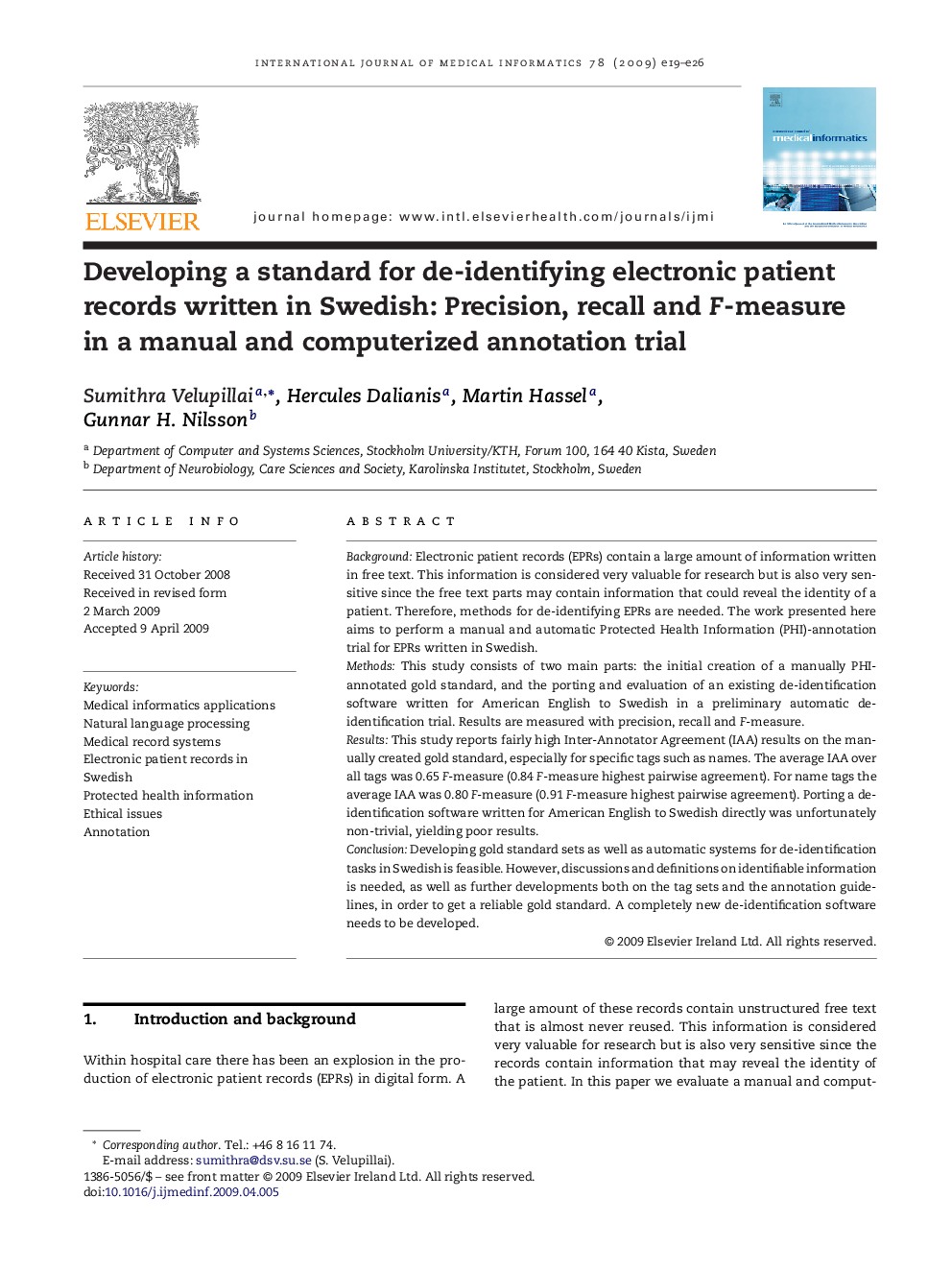| Article ID | Journal | Published Year | Pages | File Type |
|---|---|---|---|---|
| 516341 | International Journal of Medical Informatics | 2009 | 8 Pages |
BackgroundElectronic patient records (EPRs) contain a large amount of information written in free text. This information is considered very valuable for research but is also very sensitive since the free text parts may contain information that could reveal the identity of a patient. Therefore, methods for de-identifying EPRs are needed. The work presented here aims to perform a manual and automatic Protected Health Information (PHI)-annotation trial for EPRs written in Swedish.MethodsThis study consists of two main parts: the initial creation of a manually PHI-annotated gold standard, and the porting and evaluation of an existing de-identification software written for American English to Swedish in a preliminary automatic de-identification trial. Results are measured with precision, recall and F-measure.ResultsThis study reports fairly high Inter-Annotator Agreement (IAA) results on the manually created gold standard, especially for specific tags such as names. The average IAA over all tags was 0.65 F-measure (0.84 F-measure highest pairwise agreement). For name tags the average IAA was 0.80 F-measure (0.91 F-measure highest pairwise agreement). Porting a de-identification software written for American English to Swedish directly was unfortunately non-trivial, yielding poor results.ConclusionDeveloping gold standard sets as well as automatic systems for de-identification tasks in Swedish is feasible. However, discussions and definitions on identifiable information is needed, as well as further developments both on the tag sets and the annotation guidelines, in order to get a reliable gold standard. A completely new de-identification software needs to be developed.
